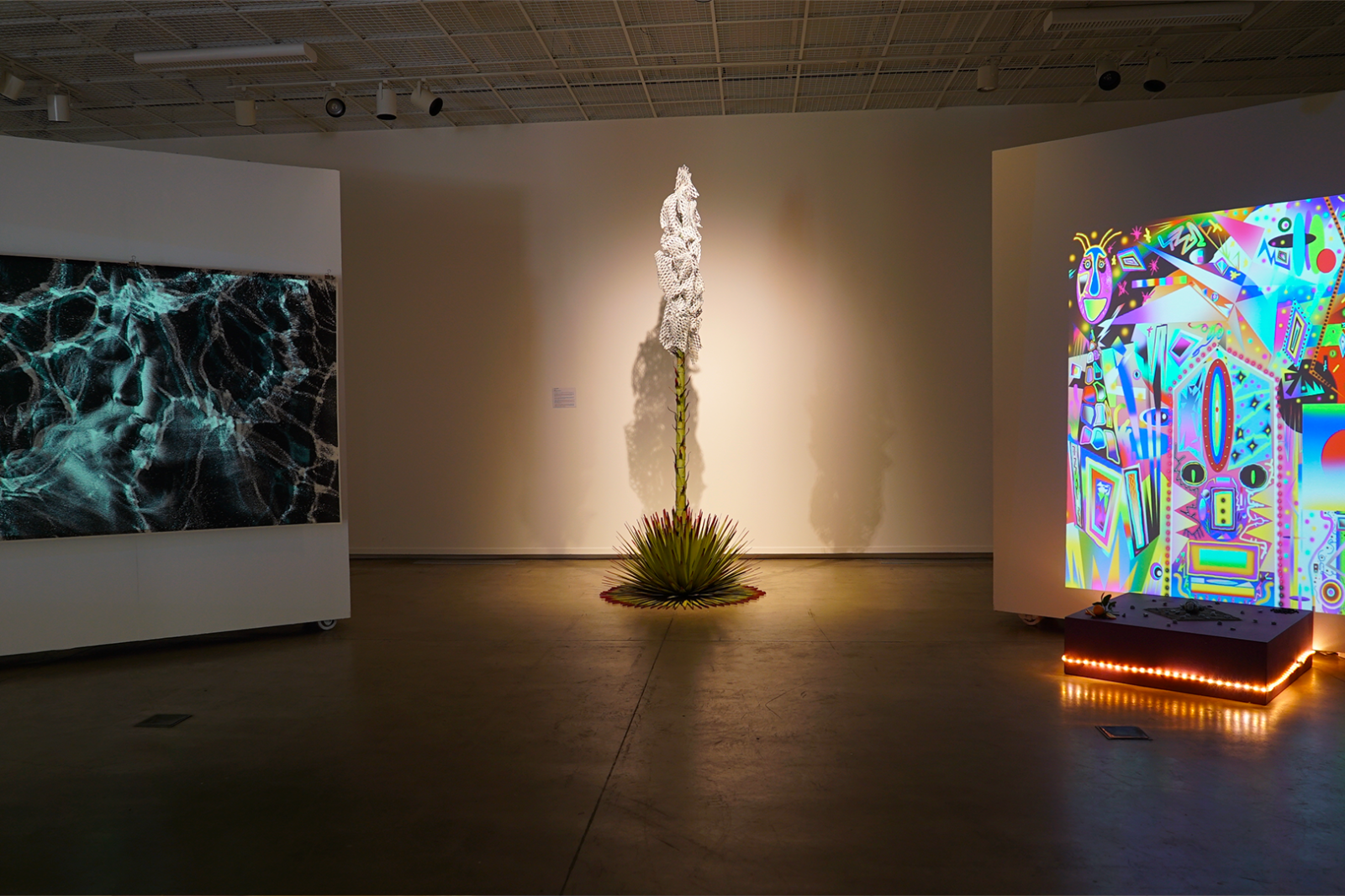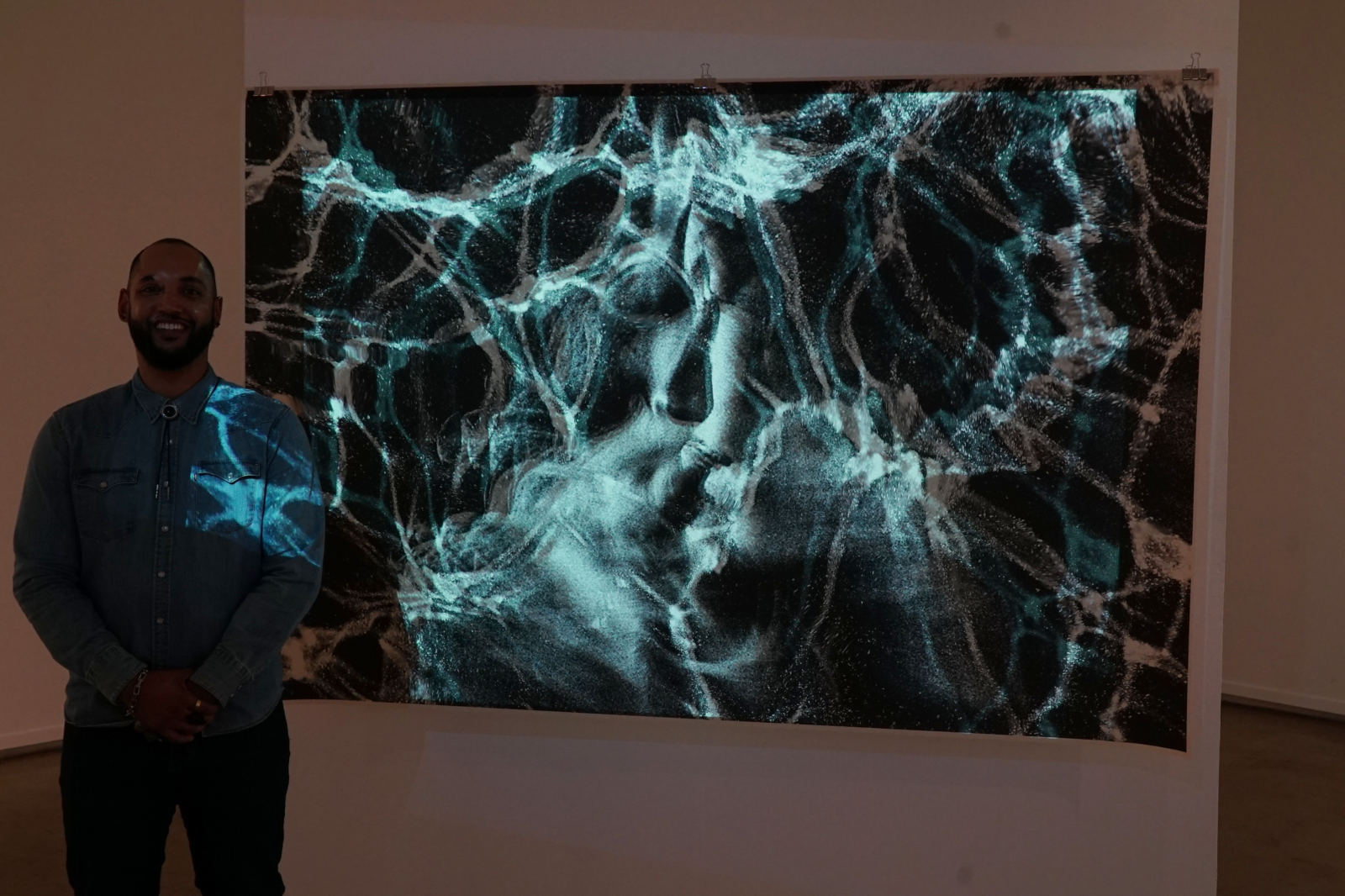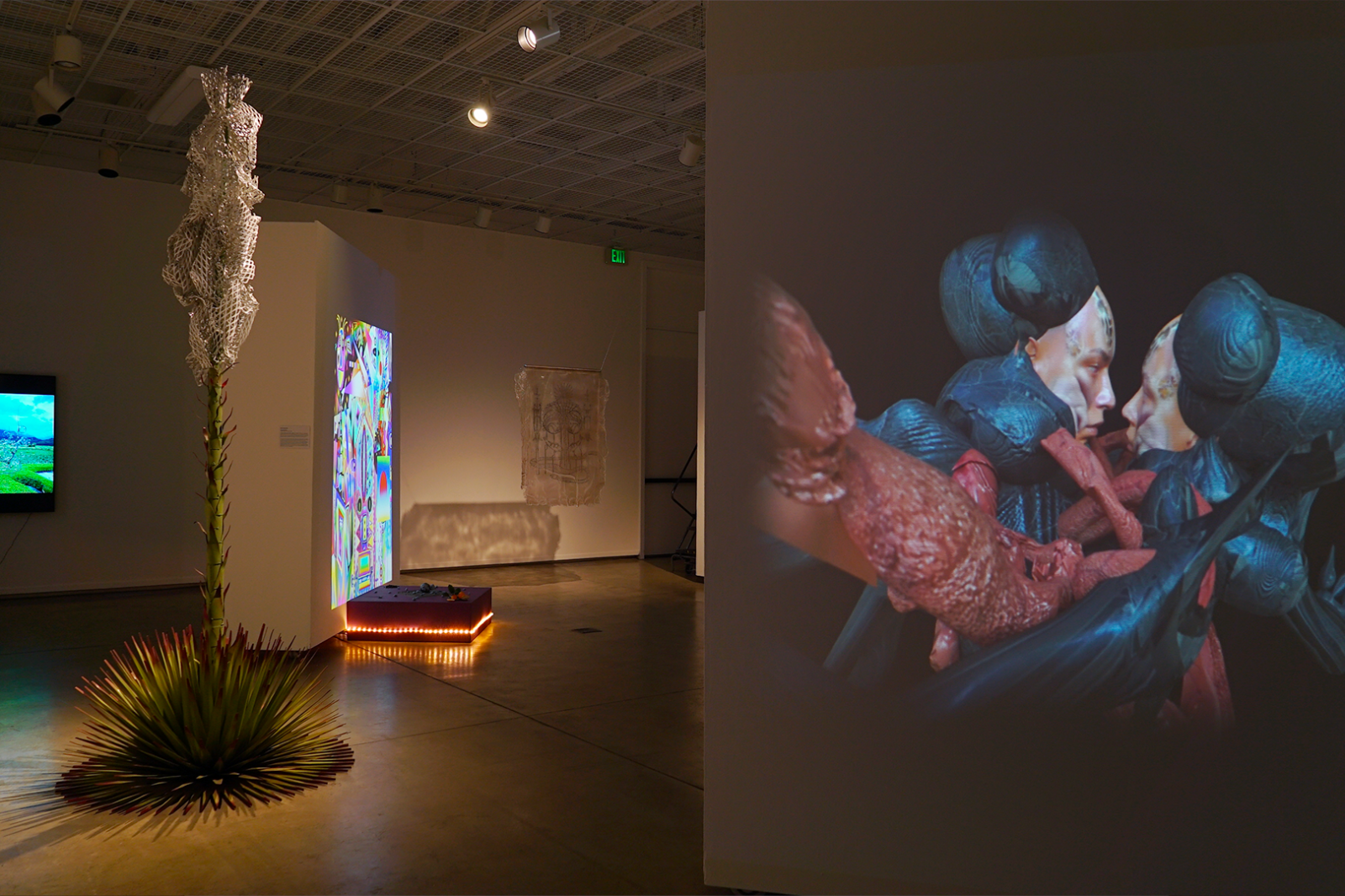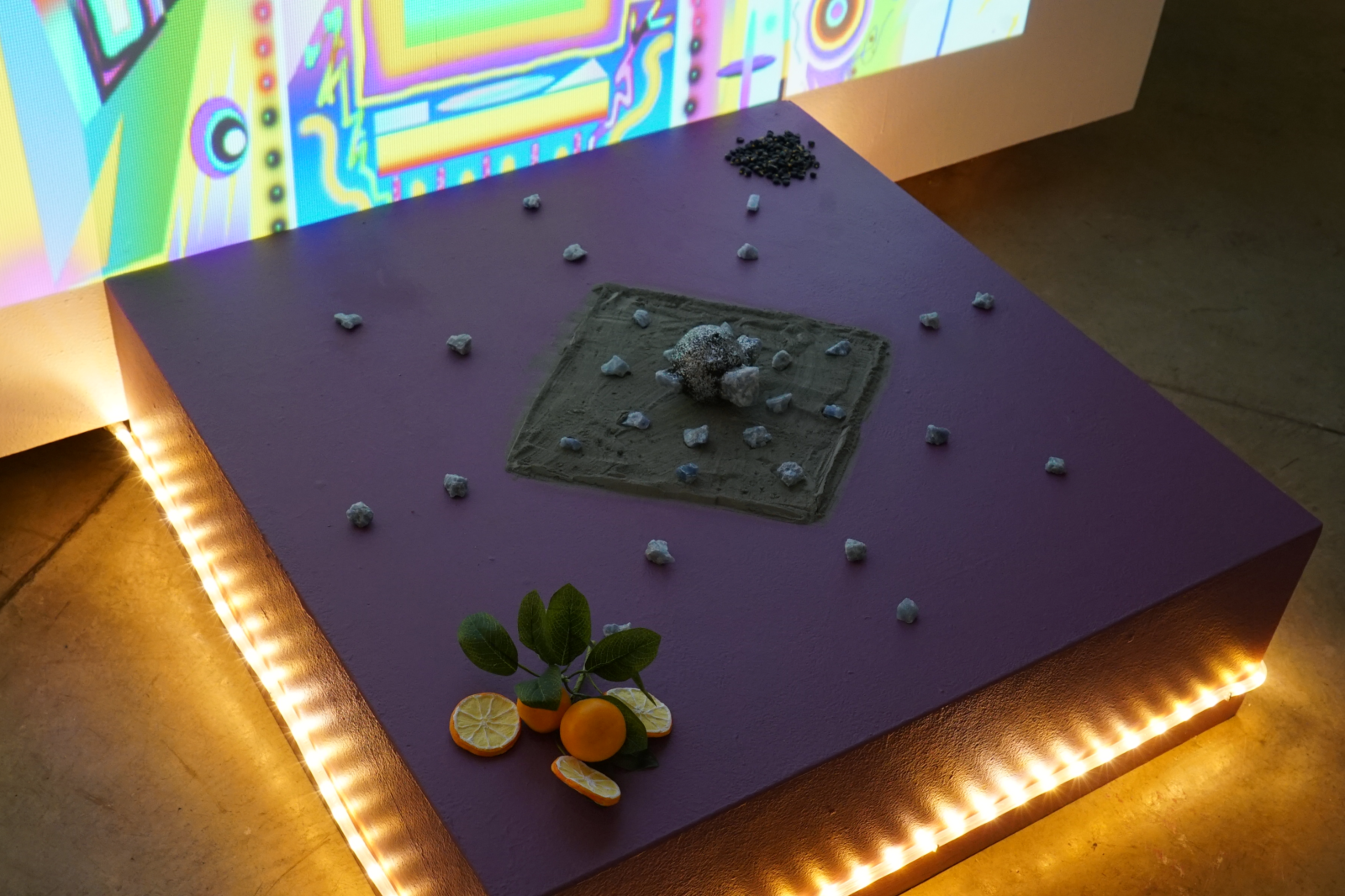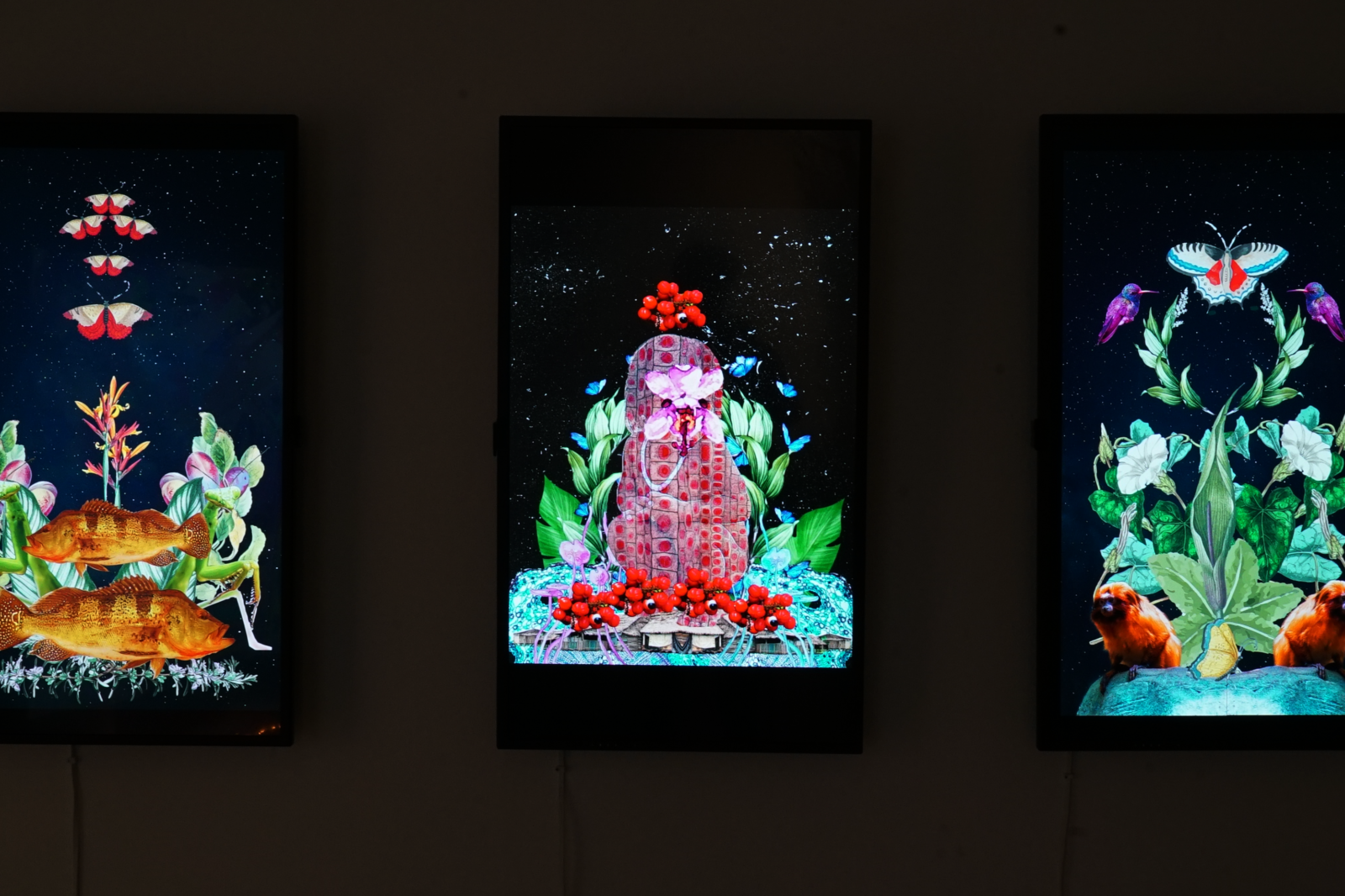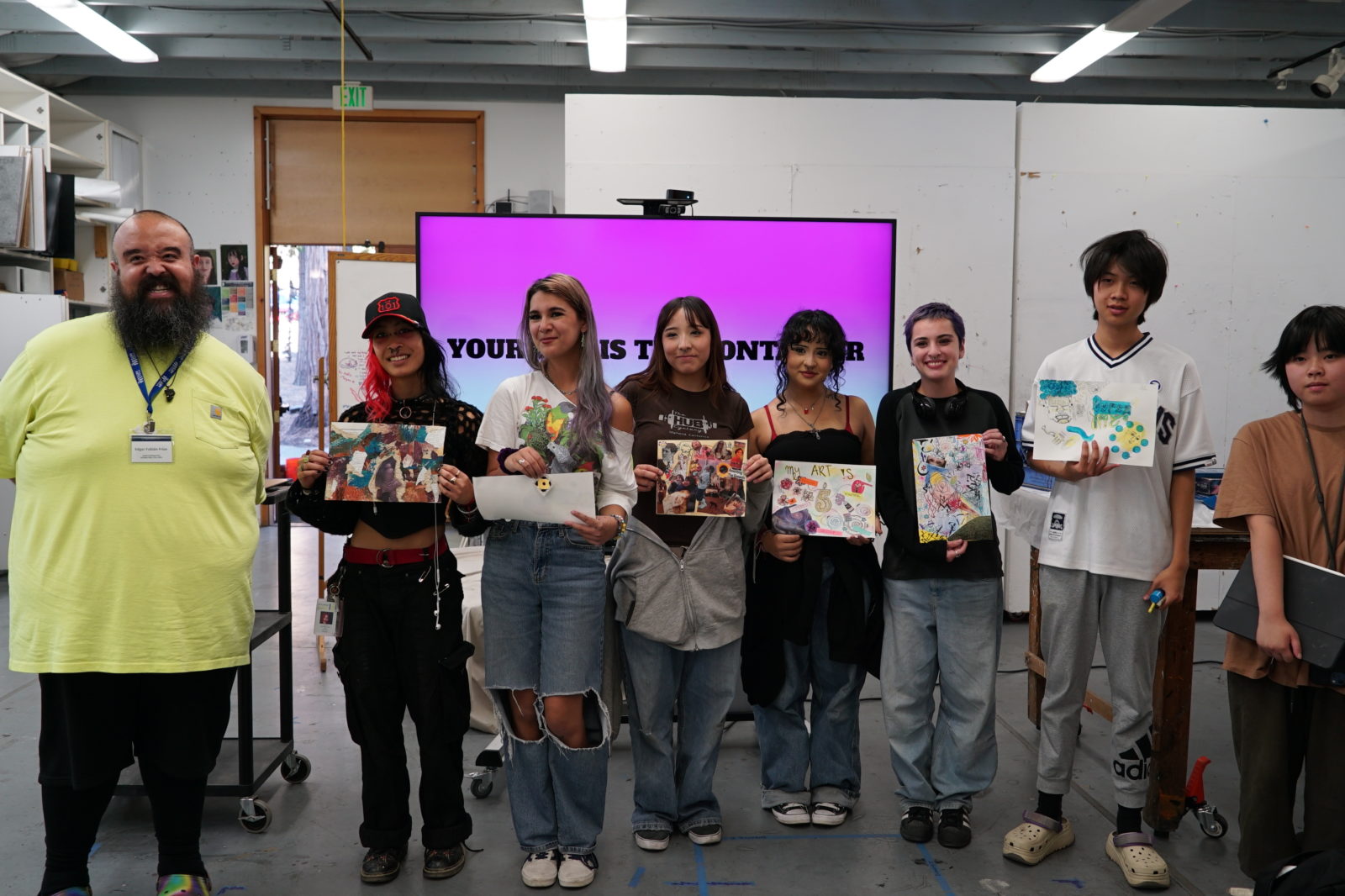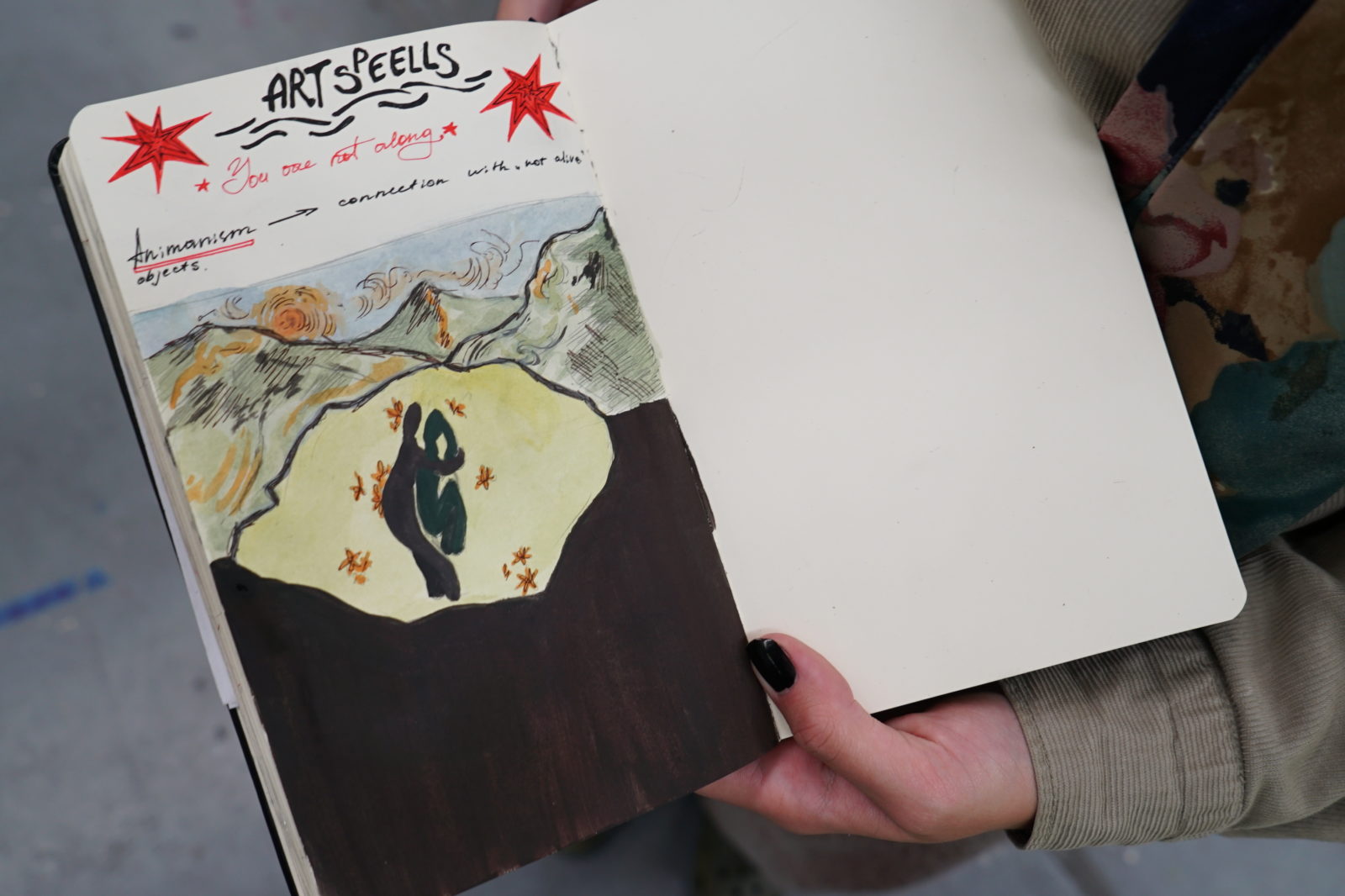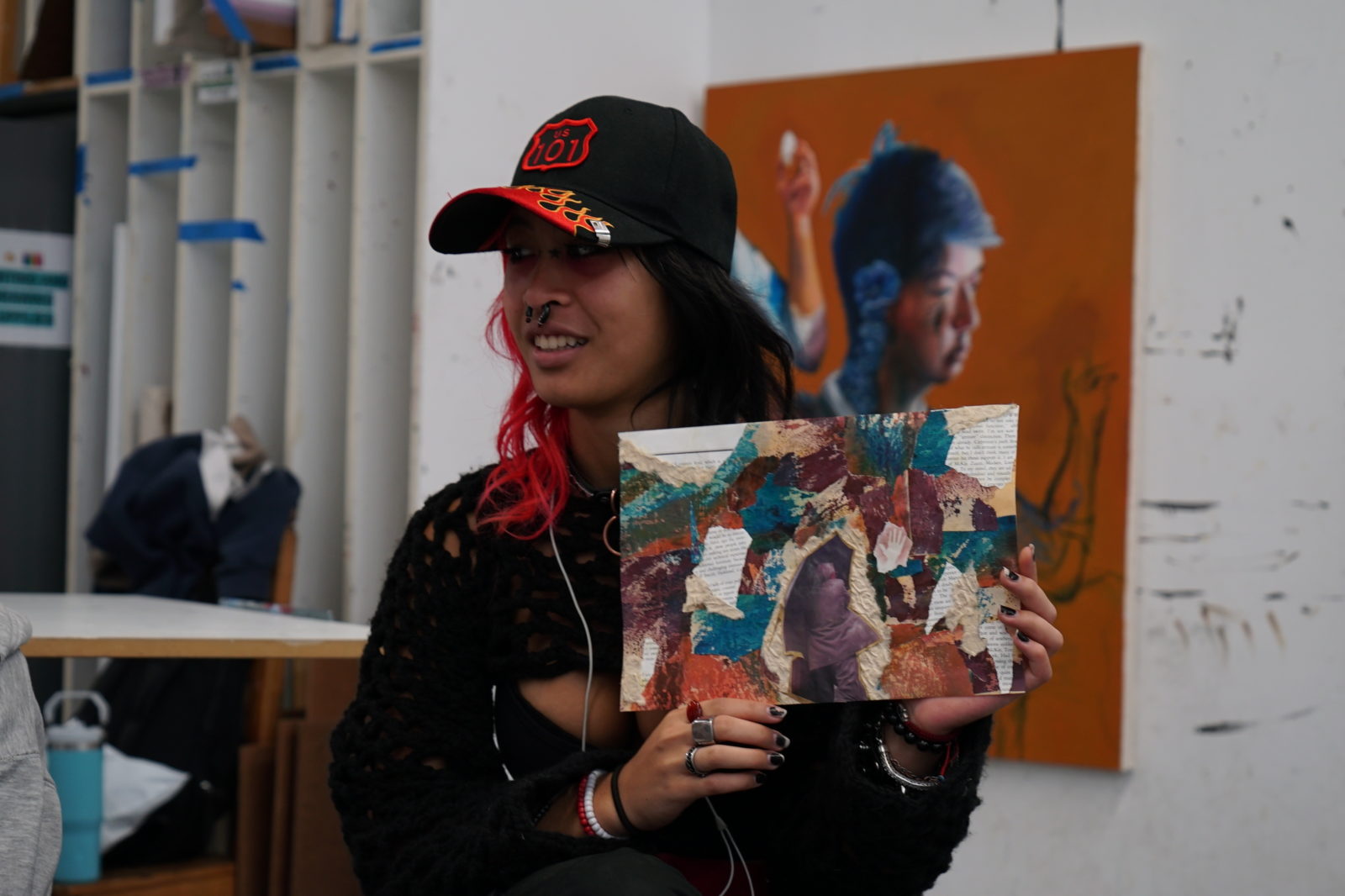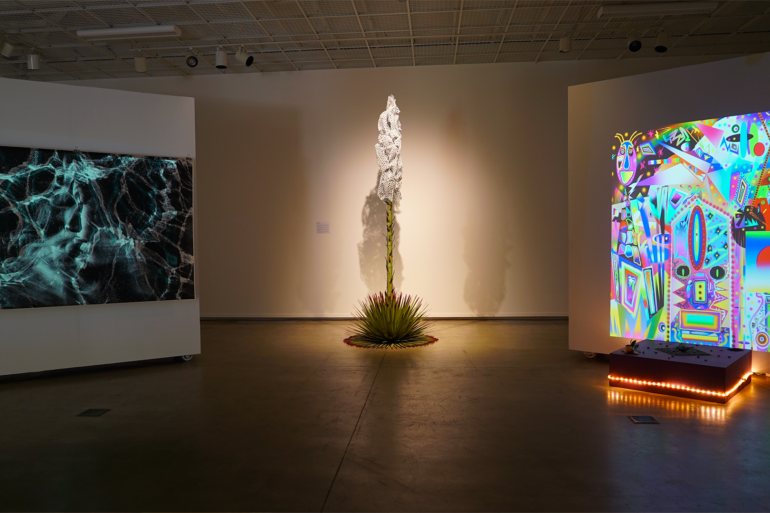Featured Artists:
Bobby Joe Smith III
Edgar Fabián Frías
Gerald Clarke
Moara Tupinambá
Noara Quintana
Óldo Erréve
Tiare Ribeaux
Qianqian Ye
Bomi Yook
SUPERCOLLIDER and Idyllwild Arts Academy are pleased to present the collaborative exhibition ‘The Grammar of Animacy’. A special thank you to the Native American Art Center for generous support for the exhibition.
Indigenous worldviews have always been aligned with notions of interconnectedness and recognition of the elements of the land–such as stones and mountains–as ancestors with intelligence and wisdom. In “Braiding Sweetgrass,” Robin Wall Kimmerer writes about the grammar of animacy: ‘’Plants and animals are animate, but as I learn, I am discovering that the Potawatomi understanding of what it means to be animate diverges from the list of attributes of living beings we all learned in Biology 101. In Potawatomi 101, rocks are animate, as are mountains and water and fire and places. Beings that are imbued with spirit, our sacred medicines, our songs, drums, and even stories, are all animate.’’ Kimmerer reflects on language as a realm for shaping imagination and possibility, where the English language sets up divisions between humans and objects, which are then assigned gender or animacy. These divisions are often hierarchical.
What is the role of art as a language, and how can it serve as an instrument to invoke other ways of being, thinking, and acting, leading to a reorientation in the relationships between species, people, and spirits? Can art and artists create a space to initiate conversations on the impulse of meaning and community?
“The Grammar of Animacy” brings together the work of six artists who strive to challenge Western myths and cultivate visions that intertwine multiplicity in embodiment, queer mythologies, indigenous epistemologies, and ethical relationships with ecology and technology.
Artists in the exhibition contend with more-than-humans and relations we can build with them. Moara Tupinambá reflects on kinship relations with trees, plants, and animals in Tambaqui. Gerald Clarke’s work Punu’ul, makes visible the Yucca Whipplei, a plant of cultural significance to the Cahuilla. Artists Tiare Ribeaux and Qianqian Ye merge magical realism with elements of Hawaiian and Mandarin cosmology to examine social and environmental inequities in their project Kai Hai. Artist Edgar Fabián Frias is interested in alchemizing relations between earth and humans. Their artwork ‘3 of Cups (Tatéi Neixa)’ is an altar created with the intention of reaffirming and reestablishing ancestral pacts to bring sustaining rains and healing for the land and its inhabitants.
In addition to convening with more-than-human neighbors, works in the exhibition invite animism as a strategy for challenging colonialism, colonial narratives, and colonial sites of production. Artists Bomi Yook and Bobby Joe Smith III challenge the site of settler cities as sites for utopic worldbuilding, instead highlighting the longstanding presence of indigeneity and speculating on how indigenous people live in futures designed by settler colonizers. The work proposes a vision in which sites of decay are spaces ripe for decolonization for indigenous communities. Noara Quintana is interested in the tangible qualities of everyday items, this artist’s work intersects with the histories of the Global South to challenge colonial narratives.
In Orvópera, artist Óldo Erréve utilizes 3D design and AI-collaborative media to explore the intersection between organic forms and innovative technological tools, projecting physical and virtual bodily expressions. ORVÓPERA brings ideas of animacy to the forefront of technological collaborations – it prompts us to ask about the life and soul of the machines we work with, and how these ideas apply to all bodies.
By proposing alternative notions of animacy, the works in this exhibition ask us to consider life all around us. How are the machines we use, lands we inhabit, oceans of storms and sea life also alive? If we can understand these entities as animated, as beings rather than objects or materials, we can engender respect within our relations to them and disassemble the barriers that separate us.
This exhibition is made possible with generous funding from the Native American Arts Center and Arts Enterprise Laboratory at Idyllwild Arts.
Land Acknowledgement:
Idyllwild Arts + SUPERCOLLIDER respectfully acknowledge the Qawishpa Cahuillangnah (also known as the Cahuilla Band of Indians) and all nine sovereign Band of Cahuilla people who have stewarded this land throughout the generations and continue to steward this land for all future generations.
About Idyllwild Arts:
Nestled within 205 acres of pristine pine forest located in the renowned arts village of Idyllwild in Southern California’s San Jacinto Mountains, Idyllwild Arts is the most dynamic arts community in the nation. Founded as a respite for creators to come together from around the world, our international and multicultural community is home to a boarding arts high school of over 250 students from 30 countries, a vibrant summer arts program, and year-round programming for artists of all ages and experience levels through camps, workshops, and online courses. As a creative collective, Idyllwild Arts changes lives through the transformative power of art by promoting intercultural understanding and peace while re-envisioning the artist’s responsibility to society. Learn more at idyllwildarts.org.
